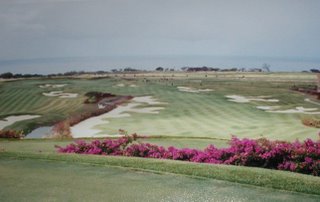Target Bunkers - are basicly useless

Walter Travis opinioned that “The primary idea of a hazard is to punish to the extent of one stroke, a poorly played shot, and to make the recovery exceedingly difficult, and even by the virtue of the following shot being extraordinarily good. If the end is not attained, the existing hazard fails to fill its functions.”
Donald Ross stated that “Hazards and bunkers are placed so as to force a man to use judgment and to exercise mental control in making the correct recovery."
It is clear that these men see the placement of hazards as the key to testing the abilities of the player and to add interest to the game. There is no mention of alignment or definition.
So how did we end up with target bunkers, since it certainly offers no strategic value and only penalizes the most wayward of player?
Robert Trent Jones began the practice of bunkering the inside and outside of a dogleg to require absolute precision of driving. Architects in turn were drawn to the definition that this created and set about using it within their own design philosophy. Architects adapted this to their own personal style, which was usually based on a more playable model than Jones. As the bunkers were moved further away from the landing zone we ended up with bunkers that were out of play and could be aimed at. Hence the target bunker was born. Players got used to this luxury and architects began to routinely add in the bunkers because of their popularity.
Is the target bunker good for architecture?
I would argue that they are not. I think this has lead to a style of architecture that has gone beyond providing challenge, interest and options - instead it has evolved to offering clearly laid out tasks defined by the hazards. The target bunkers are their to make direction and placement absolutely clear from the tee. There should be more mystery and discovery to finding the correct line on a hole. The bunkers on the inside of the hole are the ones that define the challenge and create the coveted risk and reward scenarios. The only real use for a target bunker is to provide a line when there is no other feature available for a player to focus on – with trees, long grass and landforms - this is a rare event on a modern course. Target bunkers are an unnecessary addition to the game that cost too much to build and too much maintain.
I believe architects should use fewer bunkers much more effectively. They can accomplish their strategic intent and still get the definition they crave with more careful placement in the field.

No comments:
Post a Comment